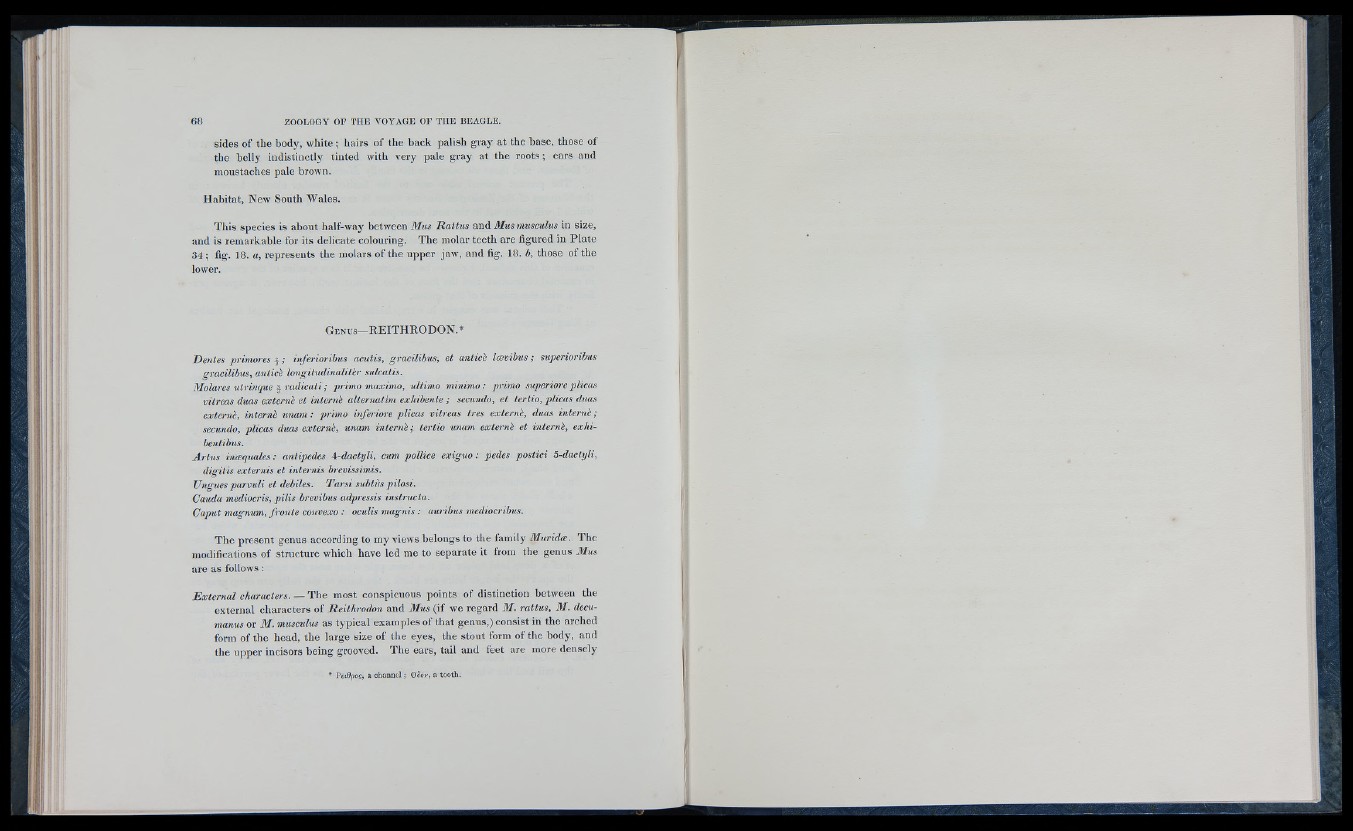
sides of the body, w hite; hairs of the back palish gray at the base, those of
the belly indistinctly tinted with very pale gray at the roots; ears and
moustaches pale brown.
Habitat, New South Wales.
This species is about half-way between 3Ius Rattus 3.x\A Mus musculus in size,
and is remarkable for its delicate colouring. The molar teeth are figured in Plate
34; fig. 18. a, represents the molars of the upper jaw, and fig. 18. h, those of the
lower.
Genus-R E ITH R O D O N .*
Denies primores | ; inferioribus acutis, gracilibus, et anticè loevibus ; superioribus
gracilibus, antich longittidinalitèr sulcatis.
Molares ulrinque ^ radicati ; primo max imo, ultimo minimo: primo superiore plicas
vitreas duas externé et interné aUernatim exhibente ; secundo, et tertio, plicas duas
externé, interné nnam : primo inferiore plicas vitreas tres externé, duas interné ;
secundo, plicas duas externé, imam interné; tertio unam externé et interné, exhi-
bentibus.
Artus iriæquales : antipedes 4-dactyli, cum pollice exiguo : pedes postici 5-dactyli,
digitis externis et internis brevissimis.
Ungues parvuli et débiles. Tarsi subtùs pilosi.
Cauda mediocris, pilis brevibus adpressis instructa.
Caput magnum, fronte convexo : oculis magnis : auribus mediocrihus.
The present genus according to my views belongs to the family Muridoe. The
modifications of structure which have led me to separate it from the genus Mus
are as follows :
External characters. — The most conspicuous points of distinction between the
external characters of Reithrodon and Mus (if we regard M. rattus, M. decumanus
or M. muscidus as typical examples of that genus,) consist in the arched
form of the head, the large size of the eyes, the stout form of the body, and
the upper incisors being grooved. The ears, tail and feet are more densely
* p£ifipo£, a channel ; 0 ?o»’, a tooth.